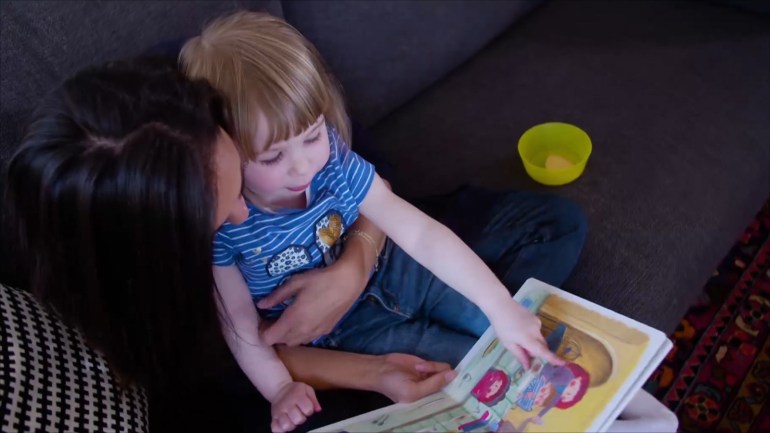Literacy does not begin only when your child enters school, but almost from birth, as children and infants acquire the skills they will use in reading, and the stage between 3 and 5 years of age for children is crucial for their reading development.
Reading to children is the best way to instill a love of reading, even though many parents do not read to their children.
In addition to reading to them, the text-rich environment for pre-school children lays the foundation for the success of their learning to read.
According to Readingeggs, a British site that provides programs to teach reading to children, contrary to what some people think, learning to read is not a natural process that occurs on its own. It is a complex process that requires appropriate teaching of various skills and strategies, such as phonics such as knowledge of the relationship between letters and sounds. , Phonemic awareness and others.
Although reading is a complex process, the steps that can be taken to build this skill are fairly simple and straightforward.
Reading Ages and Scholastic offer 10 simple steps to start teaching your child to read at home.
Focus on simple word games regularly (Pixabay)
Building phonemic awareness
Children's songs help teach them rhyme and rhythm, which helps them hear the sounds and syllables in the words, which is a good way to build phonemic awareness and is one of the most important skills in learning to read, and this fun activity is a great way for children to develop implicit reading and writing skills that will prepare them for success in the reading process. later.
Word Cards
Cut simple cards, and write words containing 3 letters on them, ask your child to choose a card, then read the word together, and lift 3 fingers.
Ask him to say the first letter he hears in a word, then the second, then the third. This activity builds basic phonics and word analysis skills, which helps them learn how to pronounce words, and if your child is just starting to learn the alphabet, focus on the sound that each letter makes. More than the names of the letters themselves.
A print-rich environment
Seeing the words printed on posters, books, etc. enables children to see and apply the connections between sounds and letter symbols. When you are outside, make your child notice the messages on billboards and banners, and focus with him on the first letter in the word. Ask him: How do we pronounce this letter?
Do you know another word that starts with this sound?
words game
Focus on simple word games regularly, and on playing games that encourage your child to listen and recognize the sounds in words and manipulate them. For example, ask questions such as: What sound does this word start with?
What sound does it end with?
You must understand the basic skills in teaching your child to read (Al Jazeera)
basic skills
You must understand the basic skills in teaching your child to read, which are 5 basic components that include phonemic awareness, the ability to hear and manipulate different sounds in words, phonemes, recognize the relationship between letters and sounds produced by vocabulary, understand the meaning of words, their definitions and their context, understand the meaning of the text, Whether in story books or information books, fluency, the ability to read aloud, quickly, comprehend, and accuracy.
The power of technology
Using a computer, mobile phone or tablet is a special pleasure for your child, you can use some websites to learn to read and turn your child's fun time into an opportunity for learning, and there are many classic books that your child can read in the applications available on your phone.
Motivate your child
Learning to read should be a fun process to keep children motivated to improve. A child may be enthusiastic about learning at first, but once things get tough, he feels overwhelmed and gives up easily.
As his mother, you should pay attention to this stage and know how to motivate him again, such as using the reward system when completing an activity and reaching new levels.
Dialogue reading
Many people do not realize the number of skills that can be acquired through the simple act of reading to the child, this not only shows them how to pronounce words, but also builds basic comprehension skills, and develops their vocabulary, and better yet also follow the method of reading "dialogue", when Ask your child to participate in the story.
Before turning the page, ask him what he thinks will happen next. You can also ask your child about the other way the book might end.
Choose books
Try to attract your child's interest in realistic books as well as fairy tales. Find books that simply address his favorite topics such as cars, dinosaurs, animals and other topics available with lots of pictures, specially designed for children at this age.
be patient
Every child learns at his own pace, so always remember that the most important thing you can do is to make reading enjoyable, by reading regularly, carefully choosing the reading activities he loves, and allowing your child to choose his books from time to time, which will instill an early love for reading and give him a better chance to learn. Read easily.

